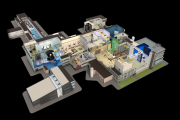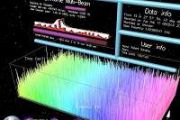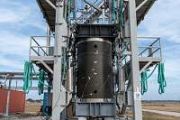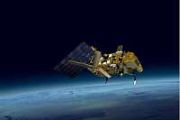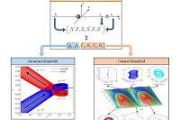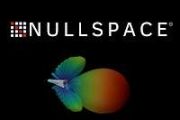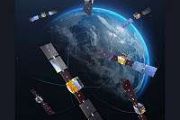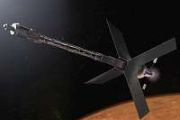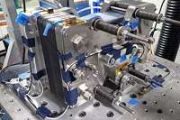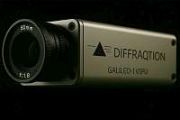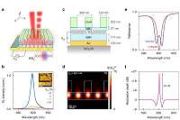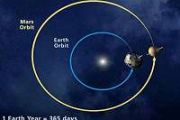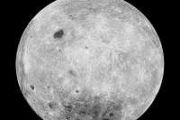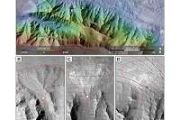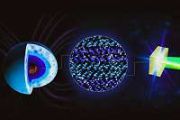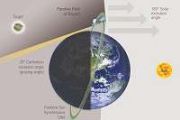
Copernical Team
What happened before, during and after solar system formation
 Asteroids and comets represent the material that was left over after the formation of the planets that orbit the Sun. Such bodies would have initially formed in a vast disk of gas and dust (protosolar nebular) around what would eventually become the Sun (protosun) and thus can preserve clues about the processes that operated during this period of the Solar system. The protosolar nebular would ha
Asteroids and comets represent the material that was left over after the formation of the planets that orbit the Sun. Such bodies would have initially formed in a vast disk of gas and dust (protosolar nebular) around what would eventually become the Sun (protosun) and thus can preserve clues about the processes that operated during this period of the Solar system. The protosolar nebular would ha Artemis II engine section moves to final assembly
 On May 24, 2022, the core stage production team moved the Space Launch System (SLS) rocket engine section for Artemis II to the core stage final integration area at NASA's Michoud Assembly Facility in New Orleans.
While there, the engine section team is completing installation of the main propulsion systems, finishing integration of the electrical and avionics systems, and preparing for fu
On May 24, 2022, the core stage production team moved the Space Launch System (SLS) rocket engine section for Artemis II to the core stage final integration area at NASA's Michoud Assembly Facility in New Orleans.
While there, the engine section team is completing installation of the main propulsion systems, finishing integration of the electrical and avionics systems, and preparing for fu Scientists release first analysis of rocks plucked from speeding asteroid
 After a six-year journey, a plucky spacecraft called Hayabusa2 zinged back into Earth's atmosphere in late 2020 and landed deep in the Australian outback. When researchers from the Japanese space agency JAXA opened it, they found its precious payload sealed and intact: a handful of dirt that Hayabusa2 managed to scoop off the surface of a speeding asteroid.
Scientists have now begun to ann
After a six-year journey, a plucky spacecraft called Hayabusa2 zinged back into Earth's atmosphere in late 2020 and landed deep in the Australian outback. When researchers from the Japanese space agency JAXA opened it, they found its precious payload sealed and intact: a handful of dirt that Hayabusa2 managed to scoop off the surface of a speeding asteroid.
Scientists have now begun to ann China releases new geologic map of Moon
 China has released a new geologic map of the Moon on a scale of 1:2,500,000, the first one in the world, according to the Chinese Academy of Sciences (CAS).
Chinese scientists from the Institute of Geochemistry of the CAS and other research institutes and universities have created the map based on data from the country's Chang'e project and other data and research findings from internation
China has released a new geologic map of the Moon on a scale of 1:2,500,000, the first one in the world, according to the Chinese Academy of Sciences (CAS).
Chinese scientists from the Institute of Geochemistry of the CAS and other research institutes and universities have created the map based on data from the country's Chang'e project and other data and research findings from internation Comet chaser mission moves from blueprint to reality
 The Comet Interceptor mission was formally adopted by the European Space Agency (ESA) at a meeting in Madrid today (Wednesday, 8 June 2022), moving from the design phase to implementation, with the next step to select a contractor to build the spacecraft and a robotic probe.
Due for launch in 2029, it will see one main spacecraft and two robotic probes - the other built by the Japanese Spa
The Comet Interceptor mission was formally adopted by the European Space Agency (ESA) at a meeting in Madrid today (Wednesday, 8 June 2022), moving from the design phase to implementation, with the next step to select a contractor to build the spacecraft and a robotic probe.
Due for launch in 2029, it will see one main spacecraft and two robotic probes - the other built by the Japanese Spa How Perseverance averts collisions and zaps
 Perseverance has a number of moving parts, including the robotic arm, drill, mast, instrument covers, high gain antenna, and mobility system. An unintended collision with the rover body or Martian terrain during motion could cause irreparable damage. In addition, the SuperCam instrument shoots the LIBS laser at the surface to create a plasma and perform spectroscopy, and we also want to prevent
Perseverance has a number of moving parts, including the robotic arm, drill, mast, instrument covers, high gain antenna, and mobility system. An unintended collision with the rover body or Martian terrain during motion could cause irreparable damage. In addition, the SuperCam instrument shoots the LIBS laser at the surface to create a plasma and perform spectroscopy, and we also want to prevent Women in space analogues demonstrate more sustainable leadership
 A new study based on Mars Desert Research Station commanders' reports reveals differences in female and male leadership behaviour. Although both genders are task-focused, women tend to be more positive. The genders also differ in their approach toward their team - while men focus on accomplishments, women emphasise mutual support. According to the author of the study, Inga Popovaite, a sociologi
A new study based on Mars Desert Research Station commanders' reports reveals differences in female and male leadership behaviour. Although both genders are task-focused, women tend to be more positive. The genders also differ in their approach toward their team - while men focus on accomplishments, women emphasise mutual support. According to the author of the study, Inga Popovaite, a sociologi Left in the dust: The first golden age of citizen travel to outer space
 The first civilian in space was a Japanese newspaper reporter in 1990, Toyohiro Akiyama. Then, six months later, Helen Sharman, a distinguished British chemist won a radio contest, beating out more than 13,000 other British men and women. However, both have been denied inclusion in the commercial space tourism club.
"Citizen access to space is, tremendously important as a tourism niche and
The first civilian in space was a Japanese newspaper reporter in 1990, Toyohiro Akiyama. Then, six months later, Helen Sharman, a distinguished British chemist won a radio contest, beating out more than 13,000 other British men and women. However, both have been denied inclusion in the commercial space tourism club.
"Citizen access to space is, tremendously important as a tourism niche and Women in simulated space missions demonstrate more sustainable leadership
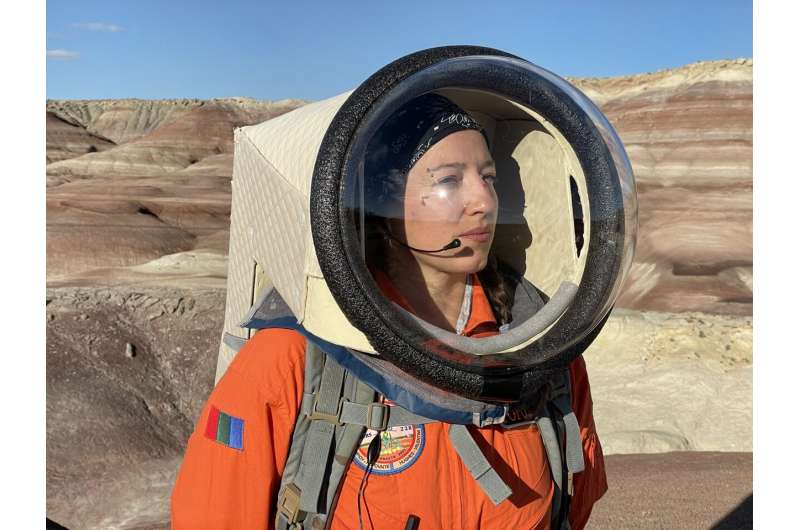
A new study based on Mars Desert Research Station commanders' reports reveals differences in female and male leadership behavior. Although both genders are task-focused, women tend to be more positive. The genders also differ in their approach toward their team—while men focus on accomplishments, women emphasize mutual support. According to the author of the study, Inga Popovaitė, a sociologist at Kaunas University of Technology (KTU) in Lithuania, the findings suggest that women may be better suited for long-term space missions.
According to the researcher, as of 2021, only three women have served as commanders in the International Space Station during two decades of its operations. Although the space is becoming more diverse, little is known about gender differences in leadership in isolated, confined, and extreme environments.
"In 10–20 years when the missions to Mars start, it will be mixed-gender groups that will be sent there. Also, a female astronaut is preparing for a flight to the Moon in a few years.
Week in images: 06-10 June 2022
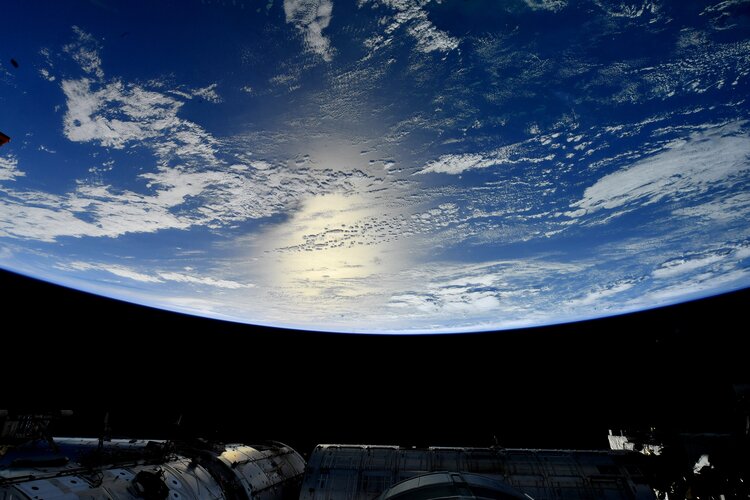
Week in images: 06-10 June 2022
Discover our week through the lens





